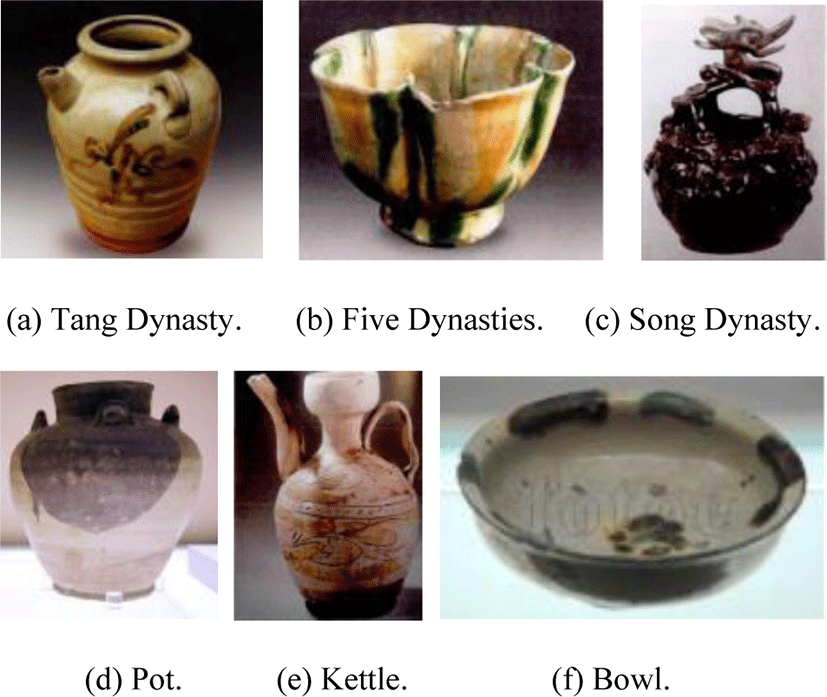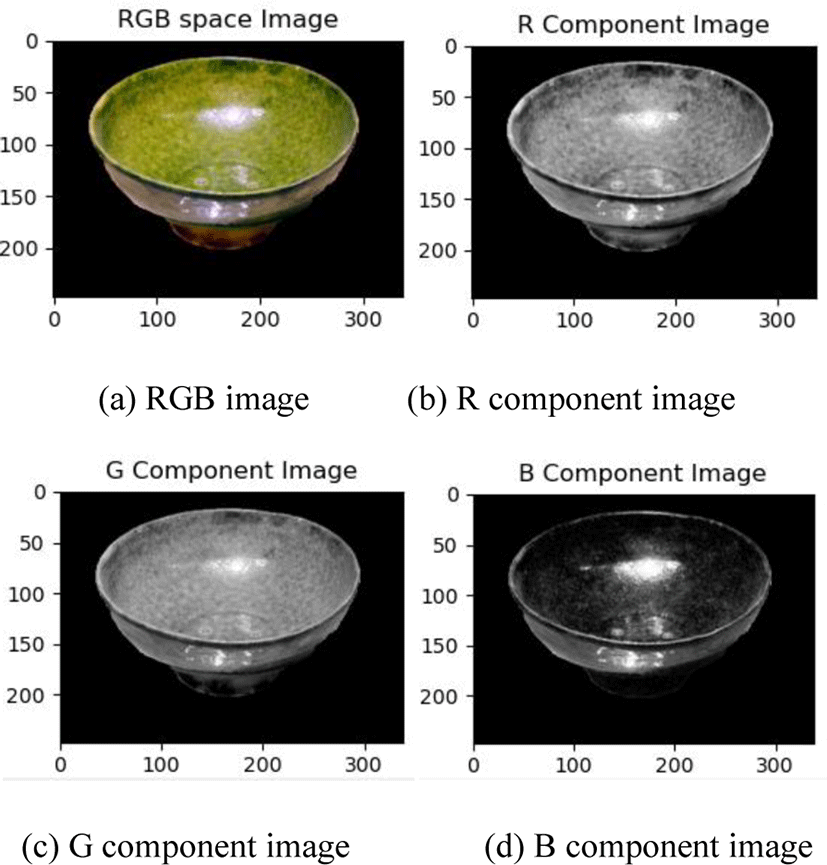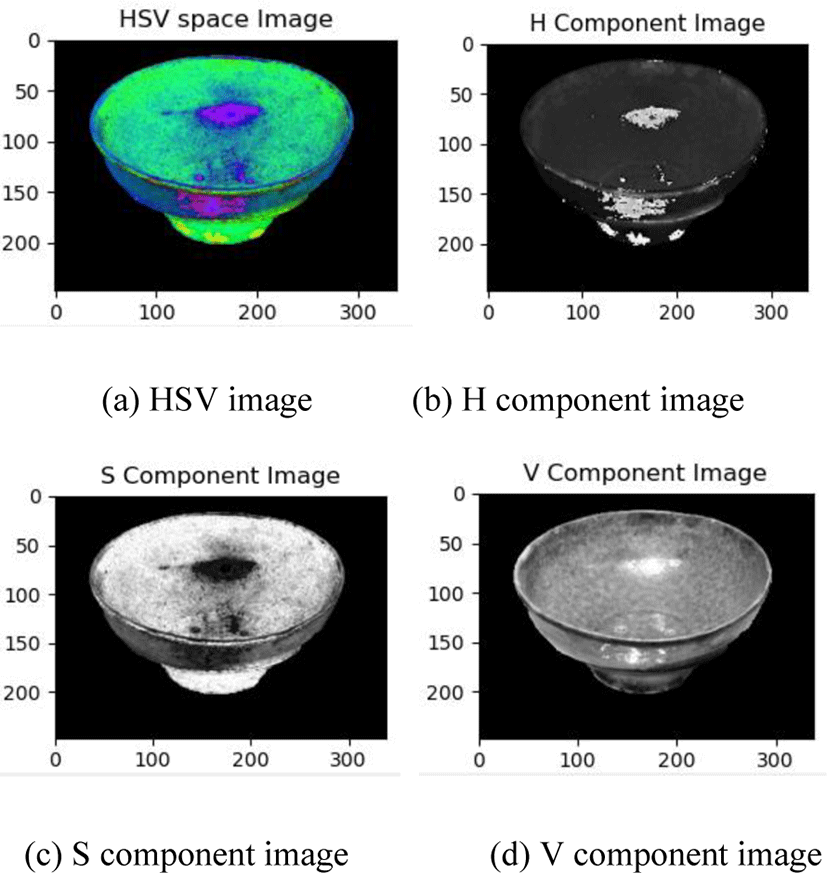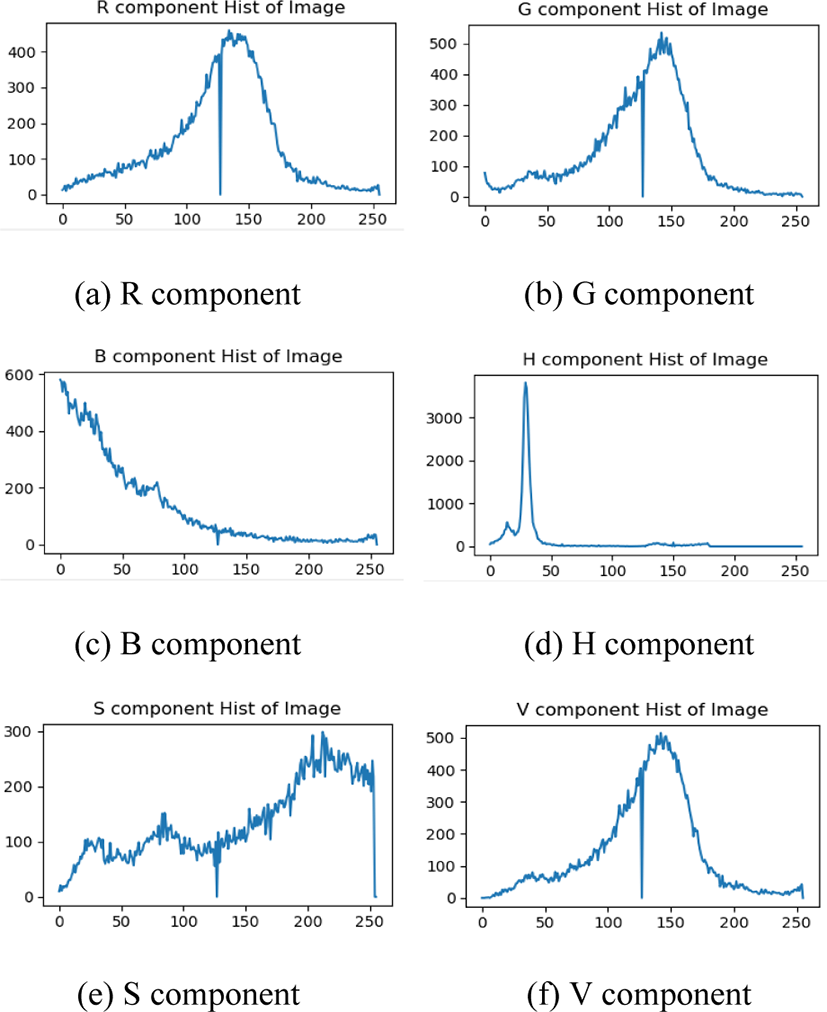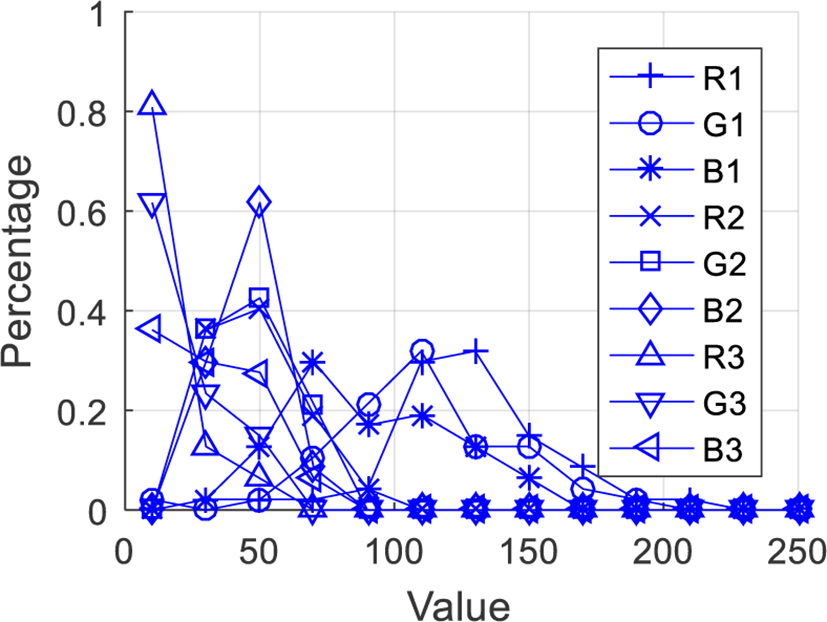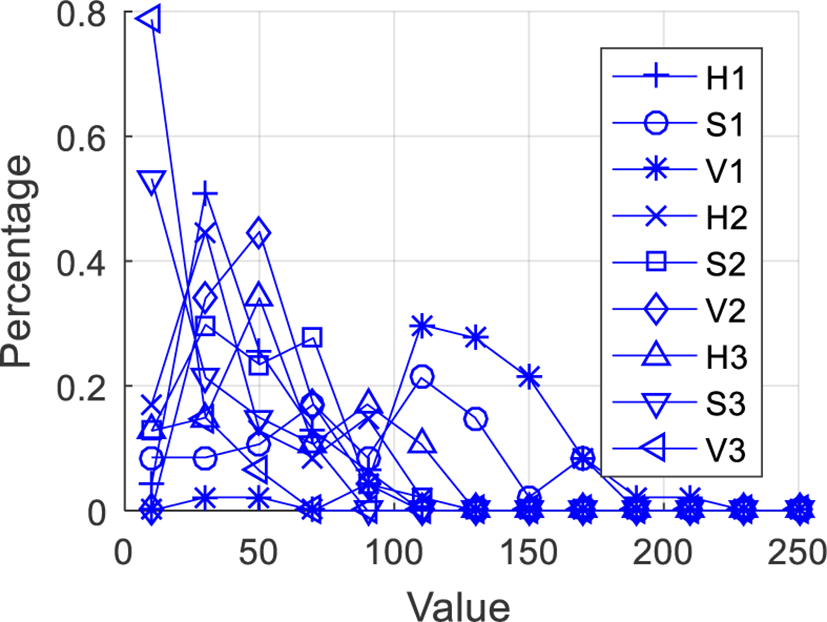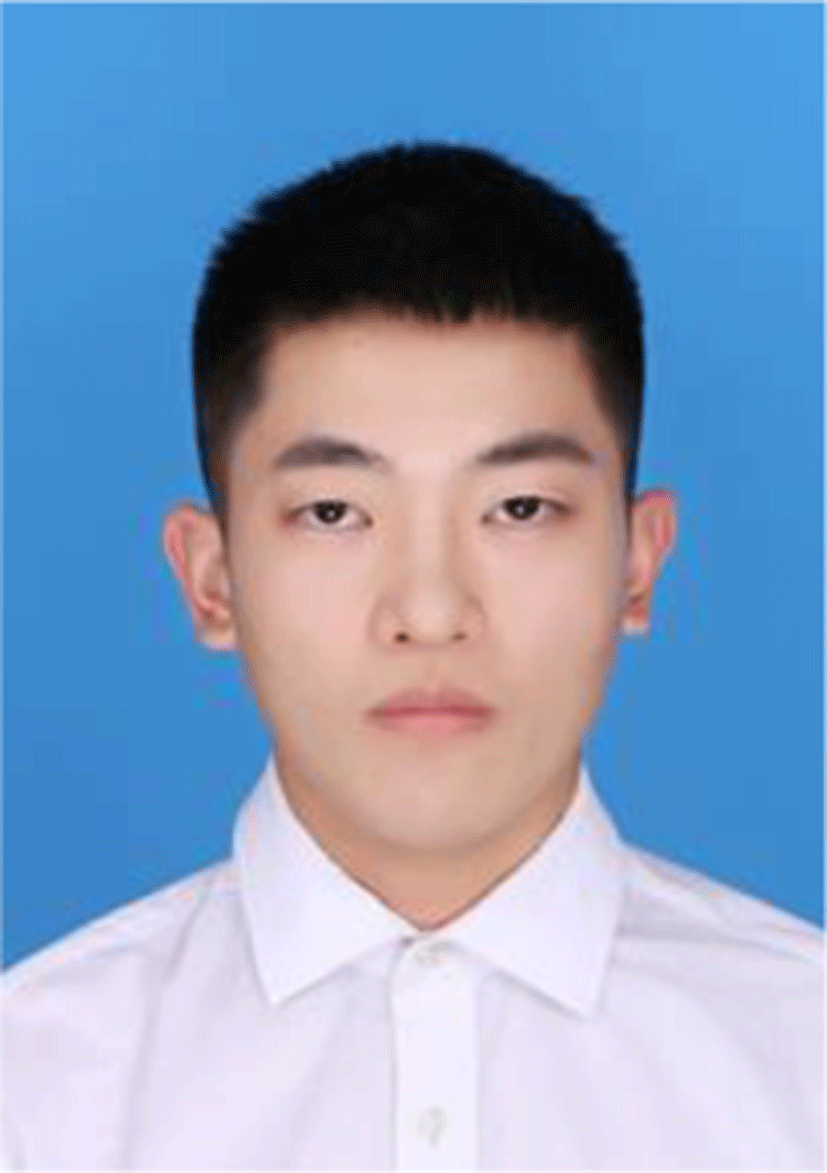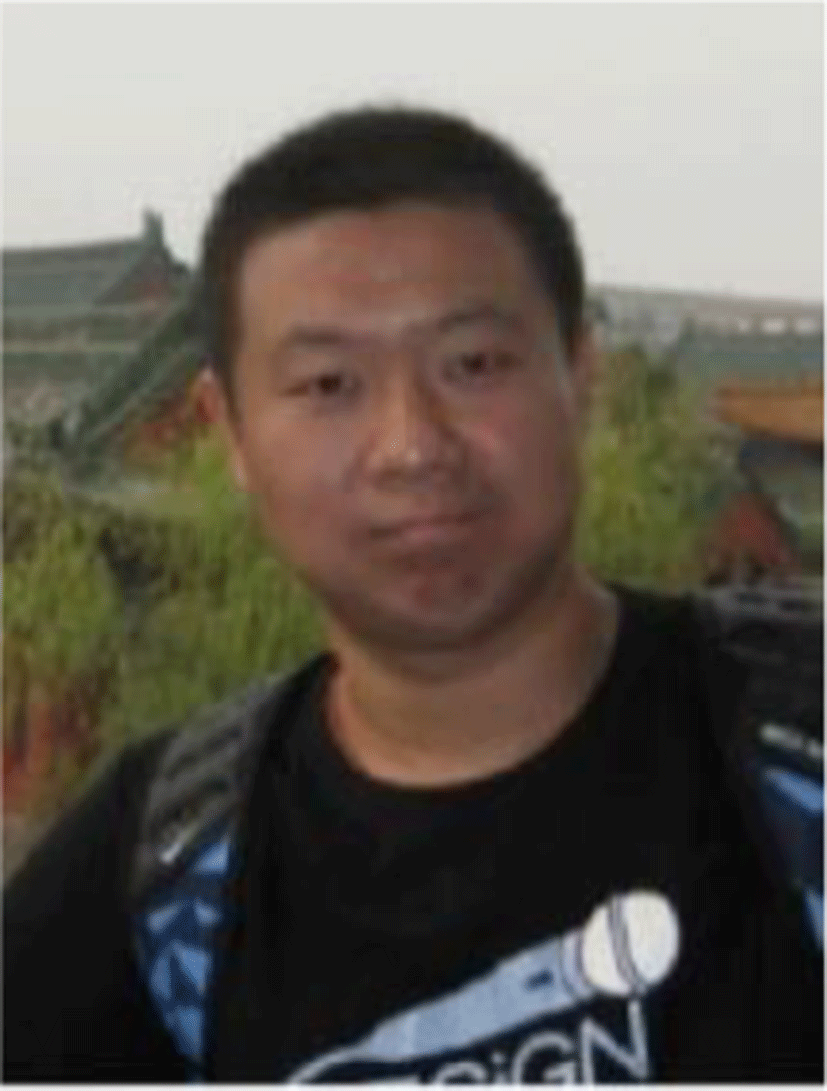I. INTRODUCTION
Qiong kiln ceramics were produced in many places, such as Sichuan and Southwest in China. They sprang up in the Five Dynasties, but their manufacturing sizes became smaller in the Song Dynasty. They were sold well in Chengdu (the capital of Sichuan province) and its surrounding areas. Figure 1 shows the Qiong kiln ceramics samples of various dynasties, namely Tang Dynasty (AD 681-AD 907), Five Dynasties (AD 907-AD 960), Song Dynasty (AD 960-AD 1279), and various utensils, namely pot, kettle, bowl.
In recent years, digital image processing and computer vision technologies have been applied to analyze the features [1], such as texture, color, and shape, which can also be used for the quantitative aesthetics of archeological ceramics. Compared with manual processing, computer-aided technologies can quickly automatically accurately and quantitatively process a large number of digital ceramic images and generate detailed statistical data, which avoids the disturbance of subjective experience [2].
Kampel and Sablatnig applied digital image processing to the automatic classification of archeological fragments [3]. Based on the correlation of the same ceramic sample in shape, material and color, they used the color characteristics of ceramic fragments to restore the fragments into a complete sample. Fusion can improve the performance in many aspects [4-6]; therefore, Smith et al. classified the thin-shell ceramics based on color and texture descriptors and reconstructed the complete ceramic samples [7]. Kamiri et al. and Shire et al. used digital image processing to detect the defects on the ceramic surface [8, 9]. Their methods have low computation complexity and are effective. Penaranda et al. controlled the tile production by estimating the color and the proportion of each particle, accordingly the appearance of the produced tiles is visual uniformity [10]. Sun detected the defects of the ceramic of water taps and designed a real-time computer digital image dynamic detection system using charge-coupled device as the image acquisition sensor [11]. Elbehiery et al. utilized digital image processing to detect the colors and defects of the tile surface [12]. This method is helpful to the tile production and improves the homogeneity of various batches. Ebrahimzadeh and Hossienzadeh developed a system to classify the ceramics based on some discriminative features, including contrast and entropy [13]. The classifier was a trained multi-layer perceptron neural network. They changed the number of layers and debugged the parameters of the network to improve the network performance.
The main contributions of this paper are as follows.
-
Digital image processing and computer vision technologies are employed for the quantitative aesthetics of Qiong kiln ceramics. Since the color features are simple and significant visual characteristics, the color features of Qiong kiln ceramics are analyzed.
-
Image segmentation is conducted to segment the foreground object from the background. Three moments (1st-order, 2nd-order, and 3rd-order) are calculated in two typical color spaces, namely RGB and HSV. The eighteen color features are analyzed according to various dynasties (Tang Dynasty, Five Dynasties, Song Dynasty) and various utensils (pot, kettle, bowl).
-
The discrimination power (DP) of each feature is measured with discrimination power analysis (DPA) [14, 15], which are helpful to the selection of the discriminant color features among various dynasties and various utensils. The components with large DPs are more discriminative, which can improve classification accuracy.
The paper can help promote the quantitative aesthetic research of Qiong kiln ceramics and is conducive to the research on the aesthetics of other ceramics.
II. METHODOLOGY
Sine the color feature should be extracted and calculated only in the foreground region, i.e., the ceramic object region, rather than the background, object detection [16] and image segmentation [17], [21] are commonly used to separate the foreground object from the background. It is challenging for the segmentation of Qiong kiln ceramics since sometimes they have mixed and complex colors.
GrabCut algorithm is a famous image segmentation method based on graph cuts [18], which is suitable for Qiong kiln ceramic image. First a user specifies a bounding box around the ceramic object that needs to be segmented. The Gaussian mixture model is used for the estimation of the color distributions of the target object and background. A Markov random field is constructed over the pixel labels. The energy function prefers the connected regions that have the same label, and the optimization based on a graph cut is conducted to infer their values. Since it is likely that the estimation taken from the bounding box becomes more and more accurate, this procedure is repeated until convergence. If a user points out the misclassified regions and reruns the optimization, the estimation can be further corrected. In addition, GrabCut corrects the results to preserve edges.
In our dataset, each image contains only one ceramic object. Figure 2, the segmentation results based on GrabCut, demonstrates that GrabCut can accurately separate the ceramic object from the background.
The color characteristics of Qiong kiln ceramics are analyzed in two color spaces, namely RGB (Red, Green, Blue) and HSV (Hue, Saturation, Value).
Let the three variables in (r, g, b) denote the red, green, and blue components, respectively. Similarly, let the three variables in (h, s, v) denote the hue, saturation, value components, respectively. max and min denote the maximum and minimum values of r, g and b, respectively. Eqs. (1-3) realize the transformation from RGB space to HSV space; while Eqs. (4)-(9) realize the transformation from HSV space to RGB space.
Figures 3 and 4 show the color component characteristics of a Qiong kiln ceramic image in HSV and RGB spaces, respectively. Figure 5 shows the histograms of the six color components. To facilitate the analysis and comparison, the ranges of all color components are normalized to [0,255].
Color moments are simple and effective color features. Since the color distribution characteristics mainly focus on the low-order moments, only the 1st-order, 2nd-order and 3rd-order moments are used as the color features.
1st-order color moment is the average value of the color component. The 1st-order color moment of the i-th component is:
where N is the number of pixels in the image, pij is the i-th color component value of the j-th pixel.
The 2nd-order color moment is the square root of the variance of the color distribution, i.e., standard deviation (STD), which measures how far the color component values are spread out from their average value. The 2nd-order color moment of the i-th component is:
The 3rd-order color moment measures the lopsidedness, such as symmetry, of the color distribution. The 3rd-order color moment of the i-th component is:
Table 1 shows the three moments of the six color moments of the image in Figures 3 and 4.
| 1st-order | 2nd-order | 3rd-order | |
|---|---|---|---|
| R | 125.99 | 43.17 | -31.52 |
| G | 123.87 | 41.10 | -35.49 |
| B | 52.10 | 50.72 | 60.22 |
| H | 52.40 | 45.10 | 65.94 |
| S | 163.53 | 69.65 | -58.50 |
| V | 130.62 | 40.51 | -25.57 |
DPA can measure the discrimination power (DP) of each feature. The larger the DP value is, the more discriminant the feature is. Assume that the dataset contains C classes, and the number of the samples of the i-th class is Si. DP of each color feature can be calculated as follows.
-
xij denotes the feature of the j-th sample of the i-th class.
-
Calculate the average value of each class:
-
Calculate variance of each class:
-
Calculate the average variance of the classes:
-
Calculate the average of all training samples:
-
Calculate the variance of all training samples:
-
Calculate the DP of this feature:
All the DPs of the eighteen color features can be measured with DPA to reveal their discriminant ability.
III. EXPERIMENTAL RESULTS AND DISCUSSIONS
The color features are labeled as one letter and one number, which denote the color component and moment order, respectively. Take an example, “R1” denotes the 1st-order moment of red component. The color features of various dynasties and utensils are labeled as two letters and one number, which denote the dynasty/utensil, color component and moment order, respectively. Take an example, “TR1” denotes the 1st-order moment of red component of Tang dynasty.
Figures 6 and 7 show the distributions of the eighteen color features of the samples in the dataset. Tables 2 and 3 show the average color components of the samples in various dynasties and of various utensils, respectively.
In RGB space, R1>G1>B1 for all dynasties and utensils, which demonstrates the proportions of the three components. In contrast, R2, G2 and B2 are approximate for each dynasty or utensil. TG3, PG3, KG3 and BG3 are much smaller than the other 3rd-order moments, which reveal their high symmetry characteristics.
-
In RGB space, Five Dynasties has larger 2nd-order moments than Tang Dynasty; while Tang Dynasty has larger 2nd-order moments than Song Dynasty. Pot and Kettle have the similar 2nd-order moments that are larger than those of Bowl.
-
In HSV space, according to H1 and H2, the colors are close to orange, yellow and green. According to S1 and V1, various dynasties and utensils can be compared in terms of saturation and brightness. TS3 is the smallest absolute 3rd-order moments for all dynasties. |S3|<|V3|<|H3| for all utensils.
-
Tables 4 and 5 show the STDs of the color components of the samples in various dynasties and of various utensils, respectively.
-
[1] In RGB space, generally, the 1st-order moments of Five Dynasties are larger than those of Song Dynasty. Bowl has larger 1st-order moments than Pot; while Pot has larger 1st-order moments than Kettle. Generally, R2>G2>B2 for all dynasties and utensils. Five Dynasties has larger 1st-order moments than the other two dynasties.
-
[2] In HSV, generally S1>V1>H1 for all dynasties. There is no remarkable regular pattern for 2nd-order moments. Generally, S3>V3>H3 for all dynasties and utensils.
-
Tables 6 and 7 show the DPs of color components according to various dynasties and of various utensils, respectively. The larger the DP value is, the more discriminant the feature is.
| 1st-order | 2nd-order | 3rd-order | |
|---|---|---|---|
| R | 0.84 | 1.00 | 1.03 |
| G | 1.08 | 1.08 | 1.21 |
| B | 1.15 | 1.45 | 1.34 |
| H | 0.84 | 1.20 | 0.84 |
| S | 0.95 | 1.13 | 1.07 |
| V | 1.29 | 0.92 | 1.14 |
| 1st-order | 2nd-order | 3rd-order | |
|---|---|---|---|
| R | 1.12 | 1.17 | 1.19 |
| G | 1.02 | 1.05 | 1.01 |
| B | 1.06 | 1.01 | 1.00 |
| H | 0.95 | 0.99 | 1.15 |
| S | 1.13 | 1.05 | 1.04 |
| V | 1.12 | 0.99 | 1.07 |
-
For dynasty discrimination, B2 is the most discriminant feature; while R2, H1, H3 are the lease discriminant features.
-
For utensil discrimination, R3 and H1 are the most and least discriminant features, respectively.
-
The DPs of the color features differ for various dynasties and for various utensils. All the DPs in Table 7 are close to 1; while the DPs in Table 8 fluctuate more dramatically.
The DPs help to select the discriminant color features; however, DPA is greedy algorithm. The classification accuracy depends does not only on the DPs of the components, but also on their combination effects for fusion and dimensionality reduction [19-21]. We will study the fusion and dimensionality reduction of the selected color features for dynasty and utensil classifications in the future.
IV. CONCLUSIONS AND FUTURE WORKS
Qiong kiln ceramics have substantial artistic value and are important Chinese ceramics. To avoid the disturbance of subjective experience, computer-aided technologies are employed to quickly automatically accurately and quantitatively process a large number of Qiong kiln ceramic images and generate the detailed statistical data. The color features of Qiong kiln ceramics are analyzed for the quantitative aesthetics. In our method, the Qiong kiln ceramic images are segmented with GrabCut algorithm. Three moments (first order, second order, and third order) of RGB and HSV components are calculated, and their DPs are analyzed according to various dynasties and various utensils, which are helpful to the selection of the discriminant color features for dynasty and utensil classifications. This paper can substantially promote the quantitative aesthetic research of Qiong kiln ceramics and is conducive to the research on the aesthetics of other ceramics.
In the future, more discriminant features, such as shape and texture, will be comprehensively analyzed to further improve the accuracy of quantitative aesthetics. In addition, we will design the dynasty and utensil classifications based on the fusion and dimensionality reduction of the discriminant features.








